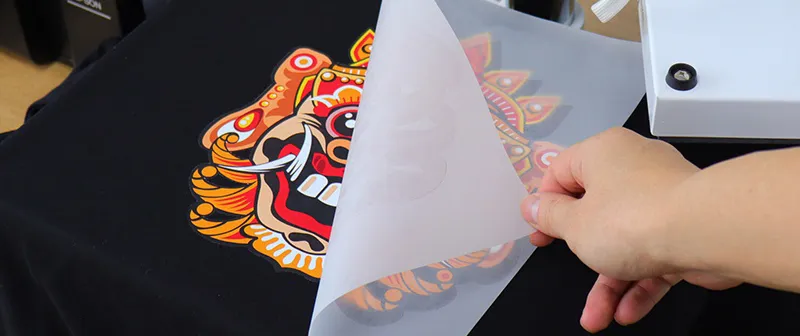DTF Printing Change: Releasing Creativity in Fabric Design and Manufacturing
DTF Printing Change: Releasing Creativity in Fabric Design and Manufacturing
Blog Article
Mastering DTF Printing: Idea for Achieving Vibrant and Durable Prints
In the world of fabric printing, achieving long lasting and dynamic prints is a desirable skill that can boost the high quality of your outcome. From picking the right products to tweak print settings and improving post-printing ending up techniques, there are numerous factors that can influence the end result of your prints.

DTF Printing Fundamentals
For those new to the globe of textile printing, understanding the fundamentals of DTF printing is vital to mastering this innovative strategy. Direct to Film (DTF) printing is a modern approach that includes moving designs from a special movie onto various fabrics using a warmth press. Unlike standard methods like display printing, DTF supplies advantages such as vibrant shades, elaborate outlining, and the capacity to print on varied products like cotton, polyester, and blends.
The process begins by printing the design on a special DTF film making use of a suitable printer with CMYK or CMYKW ink collections. As soon as the layout is published, it is then treated with a warmth press to create a sturdy and resilient print. DTF printing is known for its capability to replicate intricate layouts with high accuracy and shade accuracy, making it a prominent option for services wanting to create personalized garments, promotional things, and much more.
Picking the Right Materials

The adhesive powder acts as a bonding agent in between the printed design and the textile, so it has to have strong adhesion residential properties to make certain a durable and resilient transfer. By thoroughly choosing the right materials for DTF printing, printers can enhance the top quality, vibrancy, and durability of their prints.
Enhancing Print Settings
When aiming to accomplish the finest results in DTF printing, careful interest to maximizing print settings is essential for making certain exact and top quality transfers onto textiles. When maximizing print settings is the resolution, one crucial element to consider. Greater resolutions normally cause sharper and much more detailed prints, boosting the general high quality of the transfer. In addition, changing the ink density can assist make certain and accomplish dynamic shades that the layout stands apart on the fabric.
An additional important setting to enhance is the print speed. Finding the best equilibrium between rate and quality is necessary. While raising the rate can boost performance, it may compromise the last print's clearness and color saturation. Try out different rates and observing the results can help determine the ideal setup for each and every print work - DTF Printing.
Additionally, tweak color profiles and ensuring correct shade management are vital for achieving accurate and constant shades throughout different prints. By adjusting shade settings and profiles, printers can lessen shade inconsistencies and generate consistent outcomes, enhancing the overall print top quality and consumer satisfaction.
Preparing Artwork for DTF Printing
Transform the artwork to CMYK color setting to ensure that the colors equate properly from screen to print. Bear in mind to mirror the final design before printing to make certain that it moves properly onto the garment. By complying with these steps and paying close interest to the information, you can prepare artwork that is maximized for lively and long lasting DTF prints.
Post-Printing Finishing Methods
Implementing reliable post-printing completing methods is vital to boosting the resilience and aesthetic charm of DTF prints on textiles. As soon as the printing see procedure is total, using warm to the printed layout is essential.
After warm pushing, peeling the family pet film carefully is an important action. This process must be done gradually and continuously to stop any type of damages to the print. As soon as the movie is eliminated, the print may call for extra curing time to even more establish the ink into the material. This step helps improve the washability and sturdiness of the print, guaranteeing it can withstand several laundry cycles without fading or breaking.
Additionally, trimming any kind of excess film around the design can give the last print a expert and tidy appearance. Putting in the time to properly end up DTF prints post-printing can considerably affect the total high quality and durability of the fabric design.

Verdict
In final thought, grasping DTF printing needs an extensive understanding of the fundamentals, selecting appropriate products, enhancing print setups, preparing art work efficiently, and making use site of post-printing ending up strategies. By following these ideas and techniques, one can achieve durable and lively prints that meet their preferred top quality standards. Constant practice and attention to detail are crucial in accomplishing effective results in DTF printing.
From selecting the appropriate materials to adjust print setups and improving post-printing ending up strategies, there are various elements that can influence the outcome of your prints. Unlike typical techniques like screen printing, DTF offers benefits such as dynamic colors, intricate detailing, and the capacity to print on varied products like you can find out more cotton, polyester, and blends.
When the style is printed, it is then healed with a heat press to create a resilient and durable print.When aiming to accomplish the finest results in DTF printing, meticulous attention to maximizing print settings is essential for making certain specific and high-grade transfers onto textiles.In conclusion, understanding DTF printing needs an extensive understanding of the basics, picking suitable materials, maximizing print settings, preparing art work effectively, and utilizing post-printing completing strategies.
Report this page